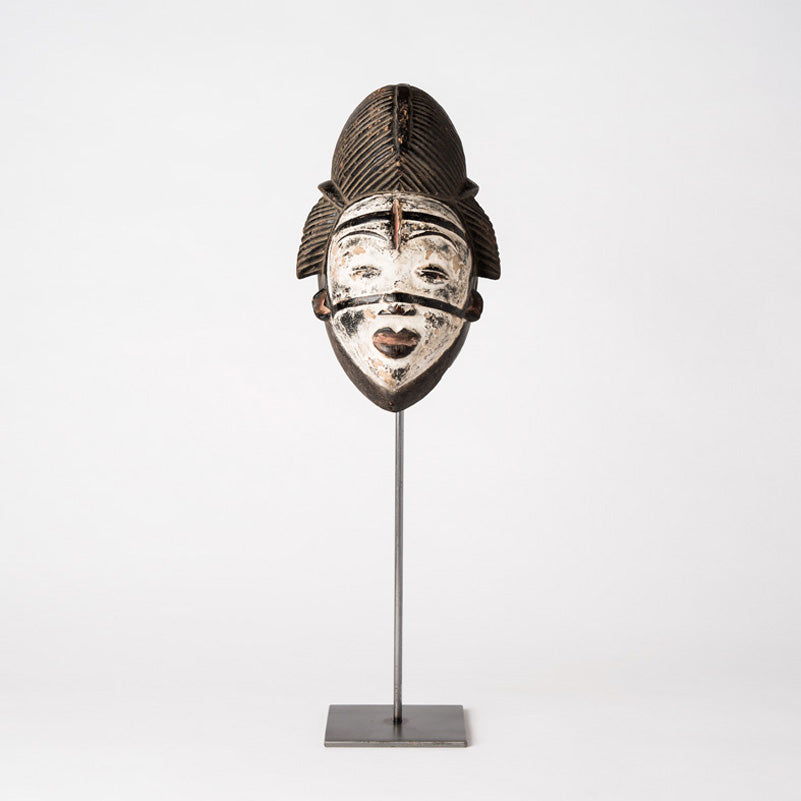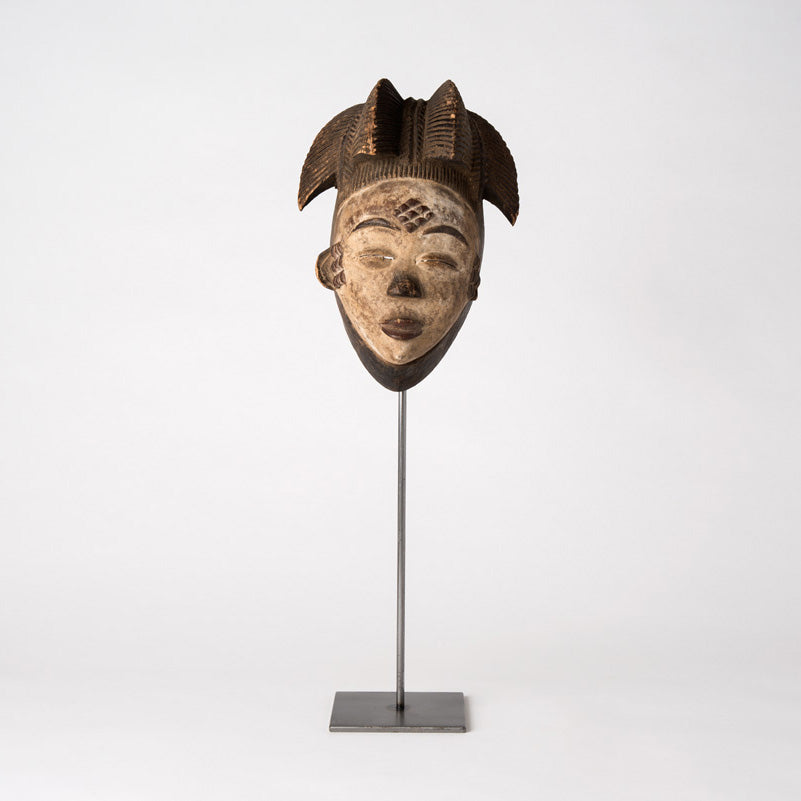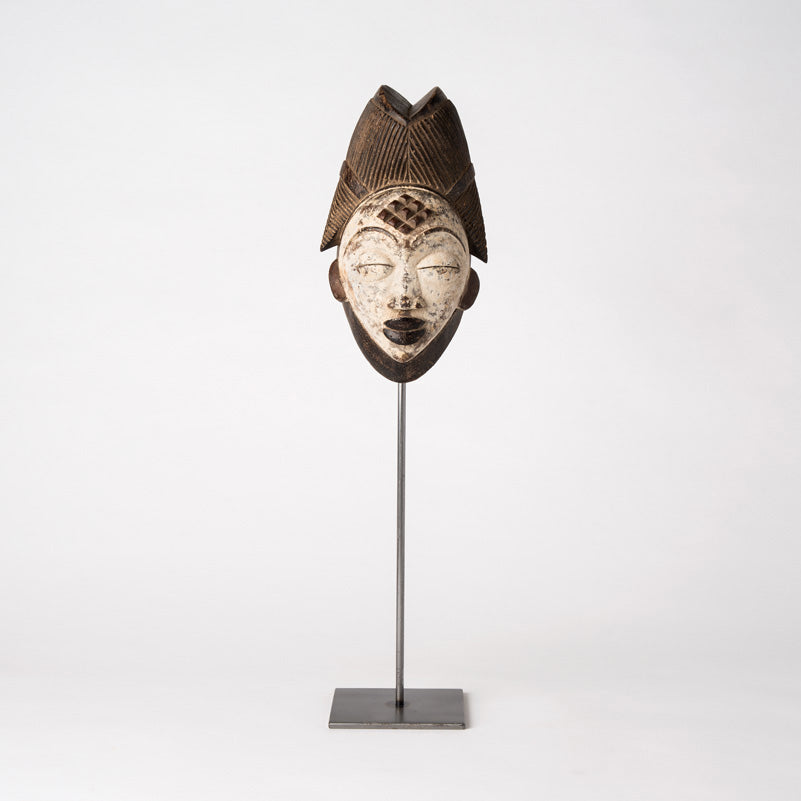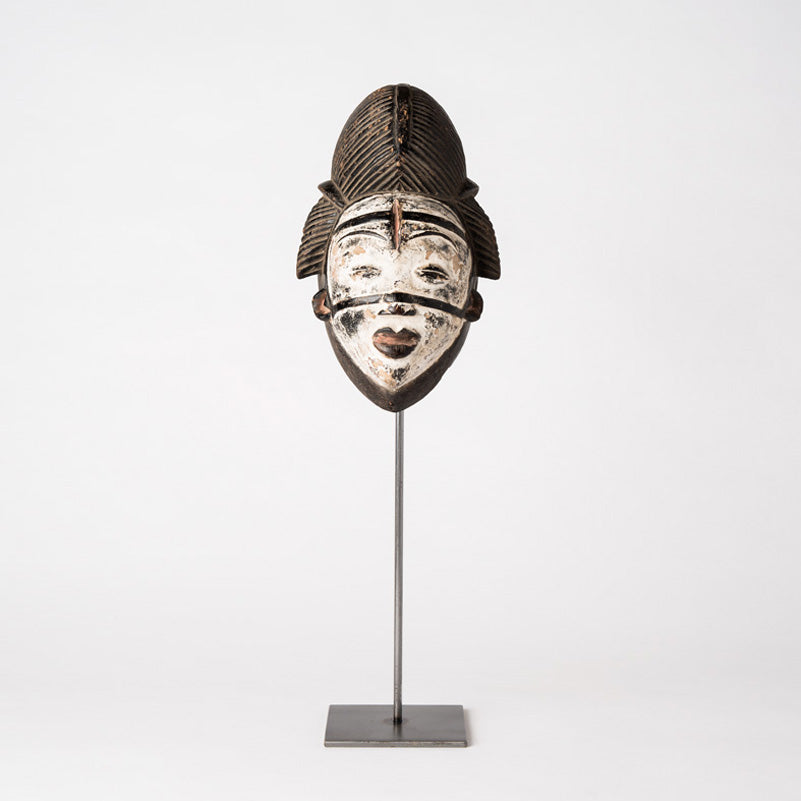Punu Mask (Large)
Punu Mask (Large)
Low stock
Couldn't load pickup availability
The mukudj mask (also called okuyi, mokoi, ukuyi, mokoi or mbwanda) simultaneously represents an ancestor spirit and an idealized woman. The diamond pattern on the forehead and squares on the temples represent the scarification marks common among Punu women and emphasize the symmetry of the face. The mukudj is danced by male members of the Mwiri Society on very tall stilts at births, funerals, initiation ceremonies for adulthood, and other major social events to invoke the approval of ancestor spirits.
Completely hand-carved in wood, with the typical white kaolin clay surface. Includes custom steel stand for display; can also be displayed on a wall with the addition of a hanging cord.
Each mask is unique; you will receive one of the ones shown here.
Product Details
Product Details
- Product type: African Décor
- Shipping Dimensions: 16.75 × 7.0 × 8.0 inches (42.5 × 17.8 × 20.3 cm)
- Shipping Weight: 3.0 lb (48.0 oz; 1361 g)
- SKU: SKU: SKU010008129
In these collections: All Products, Fair Trade, Gifts Under $250, Hand Made, and Minority-owned Businesses.
Share



-
Made by Hand
Hand crafted with love.
-
Fair Trade
Fair trade organizations, backed by consumers, support producers, raise awareness and campaign for changes in the rules and practice of conventional international trade.
-
Small Business
Small businesses are the lifeblood of our community and economy.
-
Minority Owned Business
At least 51% of this business is owned and operated by people of color.



